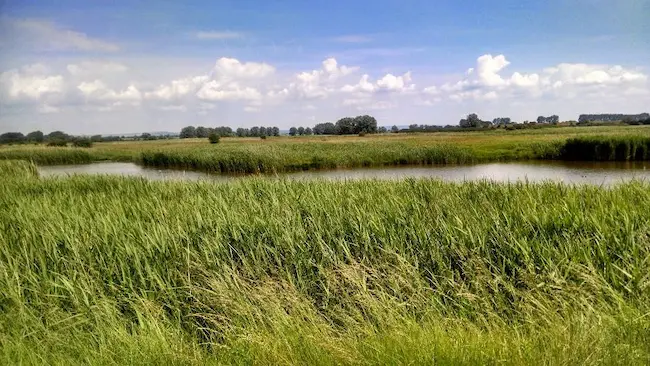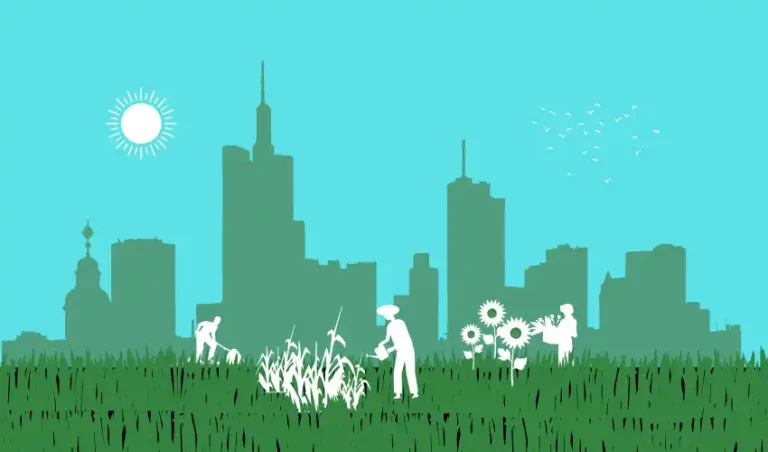Nature Based Solutions Explained: Principles, Benefit & Uses
Nature Based Solutions (NbS) refers to a broad array of strategies that leverage natural processes and ecosystems to address pressing societal challenges.
Here we’ll explain the core principles of Nature Based Solutions and the different ways they are leveraged to address sustainability challenges.
In doing so, we’ll cover examples of these solutions in practice, including the role they can play supporting carbon offsetting, water conservation and biodiversity net gain (BNG).
Core Principles of Nature Based Solutions
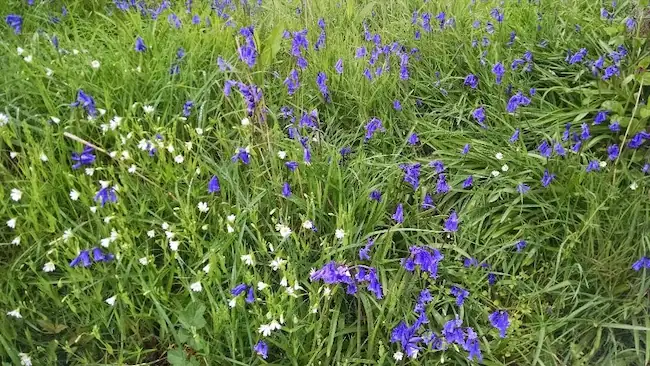
At their core, Nature Based Solutions are used to provide environmental and socio-economic benefits to address key challenges, such as climate change, water security and restoration of biodiversity.
To achieve this aim, good Nature Based Solutions, or NbS as its often referred to as, are implemented based on 4 core principles:
1. Sustainability
The primary goal of NbS projects will be to enhance the long-term sustainability and resilience of ecosystems.
This involves not only protecting existing natural habitats but also restoring degraded ones.
Sustainable management practices ensure that ecosystems can continue to provide vital services, such as clean air and water, for future generations.
2. Multi-functionality
NbS are designed to offer multiple benefits simultaneously.
For instance, a single solution such as wetland restoration can provide flood control, improve water quality, enhance biodiversity, and sequester carbon.
This multifunctional approach can make NbS highly cost-effective and efficient in addressing various environmental and social issues.

3. Inclusiveness
Effective NbS engage local communities and stakeholders in their design, implementation, and management.
This inclusive approach ensures that solutions are tailored to local needs, enhancing their acceptance and long-term success. Community involvement also helps fosters a sense of ownership and responsibility towards the environment.
4. Adaptability
NbS are inherently flexible and adaptable to changing environmental and social conditions.
They can be scaled up or down and modified as necessary to address evolving challenges. This adaptability is crucial in the face of unpredictable climate change impacts and other dynamic factors.
Examples of Nature-Based Solutions
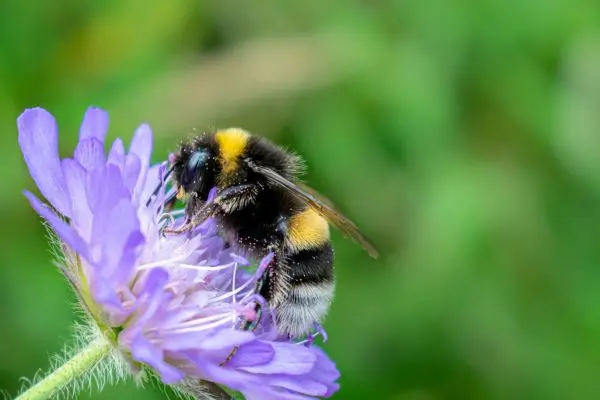
Nature Based Solutions can take several different forms, each suited to different environments and circumstances.
Below is our list covering some of the most notable and beneficial examples:
Urban Green Spaces
Urban green spaces, such as parks, green roofs, and community gardens, can be prime examples of NbS in urban settings.
When developed with the core principles in mind, these green spaces help reduce urban heat island effect, improve air quality, and provide recreational areas for residents. There is also a growing movement to advance urban green spaces into Urban Rewilding, which holds even greater potential to enhance these benefits.
Additionally, they can enhance mental well-being and social cohesion by offering spaces for community interaction.
You can find further insight into the value of urban NbS, provided by the UK GBC, available here.
Wetland Restoration
Wetlands are vital ecosystems that provide numerous benefits.
Restoring wetlands can improve water quality by filtering pollutants, enhance biodiversity by providing habitats for various species, and offer flood protection by absorbing excess water during heavy rains.
Wetlands also play a significant role in carbon sequestration, helping to mitigate climate change. It is in this role that such habitats are often referred to as ‘Blue Carbon‘ habitats.
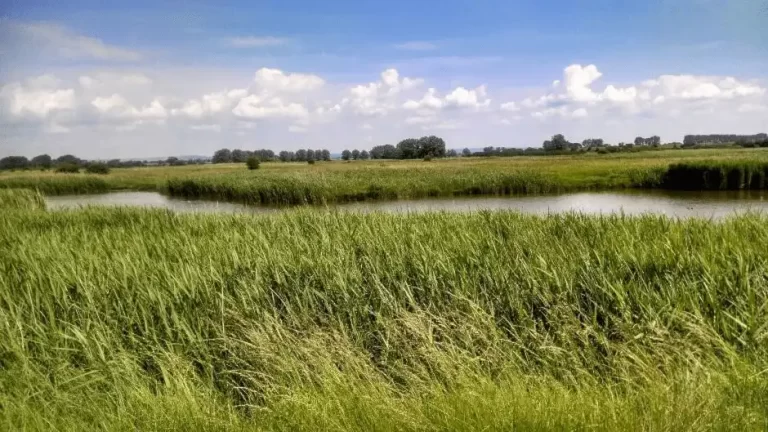
Agroforestry
Agroforestry involves integrating trees into agricultural landscapes.
This practice can improve soil health, increase crop yields, and enhance biodiversity.
Trees in agroforestry systems sequester carbon, reducing atmospheric greenhouse gas emissions, and can provide additional income sources for farmers through products like fruit, nuts, and timber.
Mangrove Conservation
Mangrove forests are crucial for coastal protection, helping to safeguard coastal communities from storm surges and erosion.
There restoration can also enhance fisheries by providing breeding grounds for fish, as well as sequestering large amounts of carbon.
The restored breeding grounds inherently support biodiversity recovery to the fish species, along with a range of other marine and terrestrial organisms.
You can find 6 fantastic examples of mangrove restoration here.
You can also learn more about mangroves and other habitats in our recent Habitats That Boost Our Resilience to Climate Change post.
The Role of NbS in Carbon Offsetting

Nature Based Solutions can be a vital source for the development of carbon offsetting.
Carbon offsetting is the process of balancing carbon emissions from one activity, with the absorption of carbon from the air at another location. You can learn more about offsetting through our Carbon Offsetting Guide.
NbS are one of the key offsetting forms, absorbing carbon through natural processes. This type of offsetting is commonly referred to as Carbon Sequestration.
Carbon Sequestration Through NbS
Ecosystems such as forests, wetlands, and mangroves are highly effective at sequestering carbon.
Trees and plants absorb carbon dioxide during photosynthesis and store it in their biomass and the soil. Wetlands and mangroves also store carbon in their organic-rich soils.
By protecting and restoring these ecosystems, NbS can significantly contribute to carbon sequestration and help offset emissions.
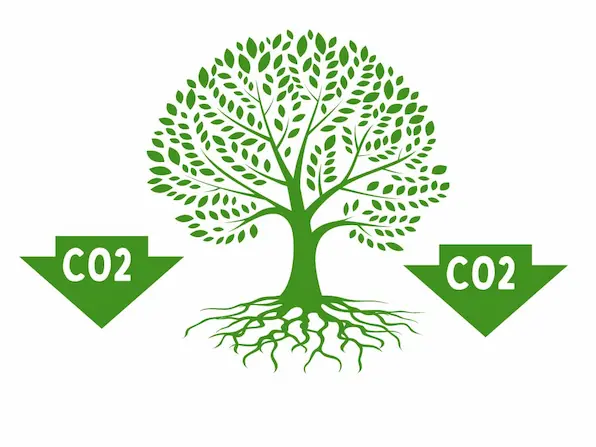
NbS to Develop Carbon Credits
Carbon offset projects that utilise NbS can generate carbon credits. This is the marketable form of offsets, which can be traded in carbon markets.
These credits provide financial incentives for the conservation and restoration of natural ecosystems.
For example, reforestation projects can generate carbon credits that are sold to businesses or individuals seeking to offset their carbon footprint.
NbS For Water Conservation

Water conservation is another critical aspect of nature-based solutions.
NbS enhances water security by protecting and managing natural water resources, improving water quality, and reducing water scarcity.
NbS For Watershed Management
Effective watershed management practices can protect water sources and improve water quality.
By restoring and conserving forests and wetlands in watershed areas, NbS can enhance groundwater recharge, reduce soil erosion, and filter pollutants from surface runoff.
This ensures a sustainable supply of clean water for downstream communities.
Improving Water Management In Agriculture
Sustainable agricultural practices, such as agroforestry and cover cropping NbS, can improve soil moisture retention and reduce water use.
These practices enhance soil health, reducing the need for irrigation and protecting water resources.
NbS in agriculture can also help prevent nutrient runoff, which can contaminate water bodies when left unresolved.
NbS and Biodiversity Net Gain (BNG)

Biodiversity Net Gain (BNG) is a principle that aims to leave the natural environment in a better state than before a project was initiated.
BNG is increasingly being integrated into NbS to ensure that development projects not only minimise their impact on biodiversity, but actively enhance it.
Below are some of the key linking benefits that can be achieved. You can also find a further insight through our BNG Summary.
Enhancing Habitat Quality
NbS can improve habitat quality and connectivity, supporting diverse species.
For example, reforestation projects can create corridors for wildlife, while wetland restoration can provide breeding grounds for birds and amphibians.
These enhancements contribute to BNG by increasing the overall biodiversity of an area.

Mitigating Development Impacts
Incorporating BNG into NbS can mitigate the impacts of development projects.
For instance, if a construction project impacts a natural habitat, NbS can be employed to restore or create new habitats elsewhere.
This ensures that biodiversity is not only preserved but enhanced, aligning with the goals of BNG.
Monitoring and Adaptive Management
Implementing BNG within NbS involves ongoing monitoring and adaptive management.
This ensures that conservation goals are being met and allows for adjustments in response to new information or changing conditions.
With adaptability being a core principle of NbS, BNG monitoring helps ensure the habitats remain resilient and healthy.
Nature Based Solutions: Key To The Future

Nature-based solutions offer a holistic and sustainable approach to addressing a wide range of environmental and societal challenges.
By leveraging the natural processes and functions of ecosystems, NbS provide multiple benefits, from climate change mitigation and water conservation, through to biodiversity enhancement and community well-being.
Integrating principles such as carbon offsetting, water conservation, and Biodiversity Net Gain further amplifies NbS impact, enhancing their financial viability as projects.
The effectiveness of NbS lies in their ability to provide multifunctional benefits, their inclusiveness in engaging local communities, and their adaptability to changing conditions.
As the world faces increasing environmental pressures, NbS present a viable and essential pathway towards a sustainable and resilient future. Through them, we can harness the power of nature to create a healthier planet for current and future generations.

